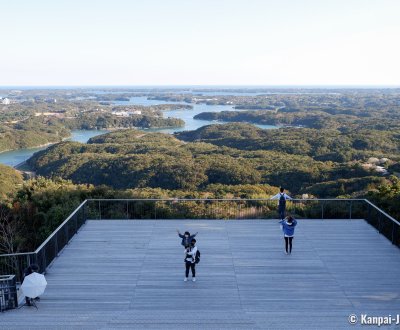Ise-Shima Peninsula
Nature and Tourism in Mie’s Heart
Ise-Shima Peninsula is located at the entrance of Ise Bay, in the east of Mie Prefecture and to the south of Nagoya City in Japan. The cradle of Shinto and a pilgrimage destination, the area is also a nature reserve in the Ise-Shima National Park. Landscapes are characterized by forests covering medium-size mountains, surrounded by an impressive indented and rocky coastline.
The eastern end of Mie prefecture is home to Ise-Shima Peninsula and its myriad of small rocky islands, a coastal area facing the Pacific Ocean. The Japaneses love this rural yet touristic place, as Ise-Shima indeed is famous for several remarkable features:
- A great spiritual heritage with Ise Jingu Grand Shrine, which is one of Japan’s 2 most sacred sanctuaries (with Izumo Taisha);
- A renown local know-how for fishing and pearl oysters cultivation; and,
- A picturesque natural landscape, between the sea and the mountains, protected in a "National Park."
The area has long been a destination for pilgrims coming from throughout the archipelago. With a comfortable lodging offer, from the standard 3-stars hotel 🏨 to the upscale resort on the seaside, it is ideal when looking for a relaxing stay on a weekend or a few days of nature vacations. Campsites and beaches 🏖 are opened in the summertime.
Located between the Kanto and the Kansai areas, the peninsula is reachable by JR or Kintetsu trains 🚅 directly from larger cities like Nagoya and Osaka-Kyoto. Driving can also be a convenient option to travel the scenic roads on the coastline and through the national park to enjoy its beautiful panoramic landscapes.
The peninsula is divided between 3 very different cities:
- Ise, the most popular and visited, at the peninsula’s northern entrance;
- Toba, spreading along the jagged coastline; and,
- Shima extending on the mountains in the heart of the National Park and down to the south.
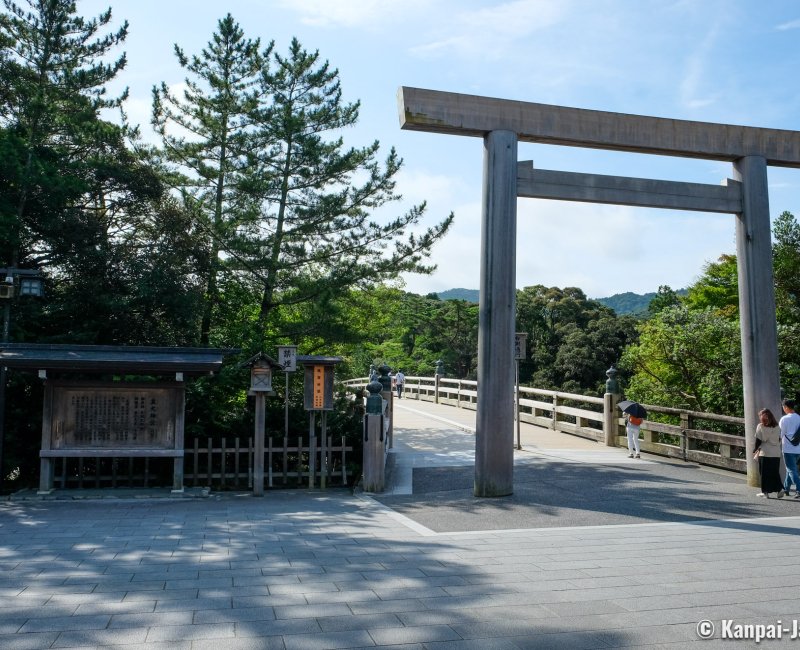
Ise and the great Shinto shrine
The city is primarily known for Ise Jingu, which is along with Izumo Taisha, Japan’s most sacred Shinto site. The national cult is therefore important, with close ties to the Imperial Household. Millions of worshipers visit each year the 2 main sanctuaries: Naiku (Kotai-jingu) the inner shrine and Geku (Toyo'uke-daijingu) the outer shrine, separated by a 5 kilometers distance and shrouded in a thick forest.
Near this holy land is Ise’s downtown, displaying a traditional architecture and symbolized by Oharai-machi, its lively shopping street. Then head to the seaside to explore Futami district, where you can visit among other places Hinjitsukan, a former luxury inn converted into a museum, and especially Futami Okitama shrine and its famous "wedded rocks" Meoto Iwa.
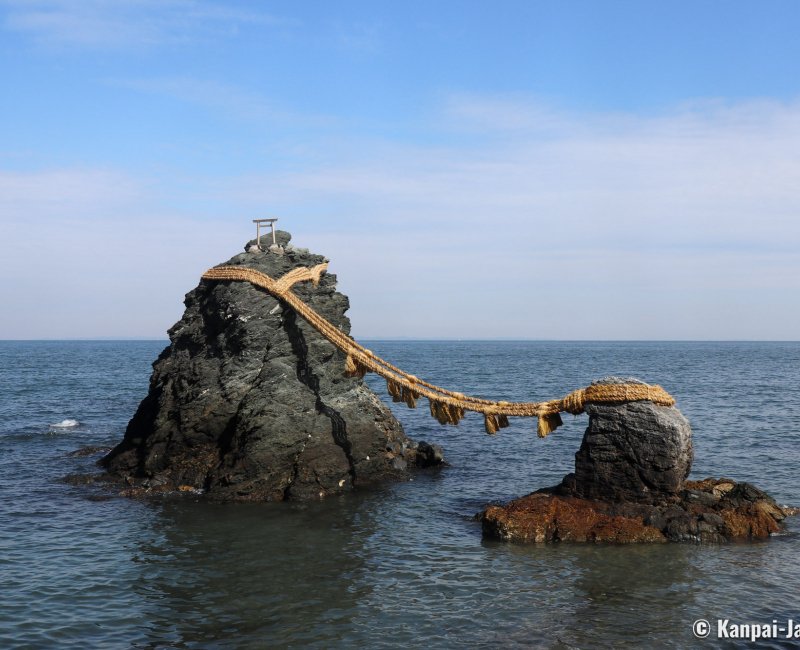
Toba and the traditional female divers
East to Ise City, Toba is overlooking a wonderful indented coastal landscape. Several hotels offering sento hot baths and panoramic views are established at the entrance of Ise Bay.
Mikimoto Pearl Island is a must-see in the area, as it is the Japanese birthplace of pearl oyster cultivation. Businessman Kokichi Mikimoto (1858 - 1954) succeeded in the creation of an artificial and efficient pearl cultivation technique in 1893. The process is heavily relying on the swimming skills of the traditional female divers, called Ama in Japan.
Ama are free divers specializing in fishing seafood and shellfish living in shallow waters, but their numbers are unfortunately dwindling each year. As a way to support their activity, you can have lunch at one of their huts near a fishing port. They cook their catch of the day in front of their guests, in a relaxed and friendly atmosphere.
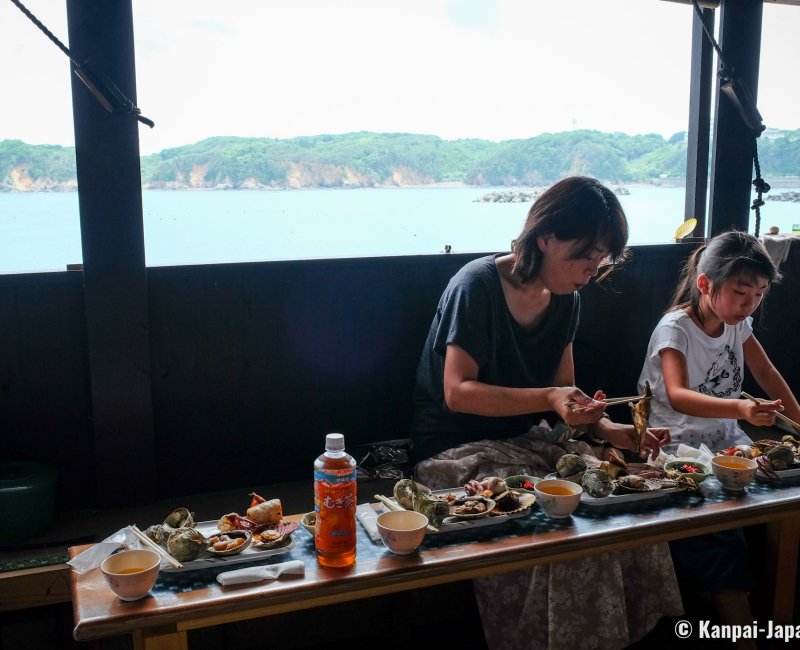
Shima and the Ago Bay
The tour of the Peninsula ends in Shima, a small rural town where mollusk farms thrive in the quiet waters of the Ago Bay, a picturesque old rias coast. Cruises departing from Kashikojima offer an easy way to discover the area. There are also a few rocky capes overlooked by lighthouses, some of which open to the visit.
In the heart of the mountains, the heights and forests of the national park hide several small Shinto sites, oozing spirituality, such as Ama-no-Iwato, Omu-iwa or Aonominesan Shofuku-ji temple. Yokoyama Observatory is worth a detour: from its large wooden platform one can see an 180° panorama on the islands of the Ago Bay.
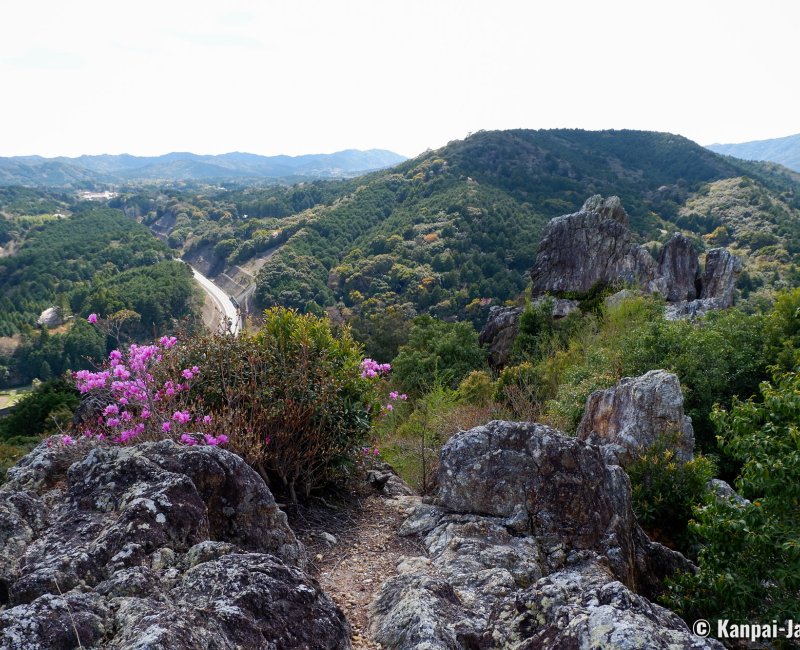
Ise-Shima is enjoyable all year round, either on a cold or a hot weather, but we recommend to go on clear-days and unobstructed horizon periods so as to make the most of the panoramic views from the mountains’ tops and along the rocky coastline. Several themed parks such as Ninja Kingdom Ise (伊勢忍者キングダ) and Parque España - Shima Spain Village (志摩スペイン村) provide additional fun activities.

